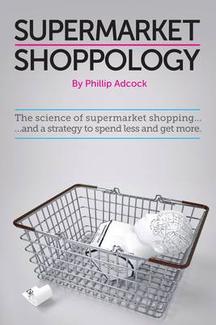 At 288 pages, Supermarket Shoppology, the new book from retail expert Phillip Adcock, has a feeling of heft and the good news for busy retailers is that you can learn a lot by just reading 24 of these pages. Those 24 pages are worth the full cover price (£1.53 Kindle, £9.79 paperback).
At 288 pages, Supermarket Shoppology, the new book from retail expert Phillip Adcock, has a feeling of heft and the good news for busy retailers is that you can learn a lot by just reading 24 of these pages. Those 24 pages are worth the full cover price (£1.53 Kindle, £9.79 paperback).
Start at page 191, where Adcock explains how to become a smarter shopper by analysing the five shopping missions:
- Impulse
- Grab and go
- Considered
- Experiential
- Inexperienced.
All five take place in news and convenience stores and your understanding of why people shop in these ways could help you unlock greater sales and profits.
Shoppers switch between modes depending what is on the shelves in front of them. They buy canned foods in grab and go mode and BOGOF tinned tomatoes in impulse mode. A loaf of bread in grab and go, a chocolate bar in impulse, a pint of milk in grab and go, a bottle of wine to take out to dinner in considered!
Adcock is self taught and set up his own consultancy in 1999 to sell shopper insight based on his learning as a retail display salesman and a merchandising development manager for a UK chain store. He says that lots of promotions are simply not designed to appeal to shoppers and the way that big grocers buy and negotiate with suppliers mean their shops are not set up to maximise sales.
This must be an opportunity for alert independents. The book has plenty of ideas sprinkled throughout it but in the 24 power pages you will get ideas on how:
– To ensure shoppers have the opportunity to interact physically with products. “A product in the hand is halfway towards being a product in the basket,” he says. For, example, include batteries in torches as the heavier weight makes them more appealing.
– To provide space, a good product range and time for considered shopping. This is where adding organic and fair trade options makes a difference. Or an upmarket range of greeting cards. Secondary displays often help shoppers to make up their minds what to buy, he says. Shoppers want the process of comparing to be as practical and easy as possible. Segmenting the shop by meal occasion really helps.
– To serve grab and go purchasers – such as the shopper buying a pack of cigarettes every morning – don’t consciously engage with the process. They are replenishing, not shopping. If you are out of stock, then you break the behaviour. Sometimes you do this to try and sell more stuff but there is a danger that they may change their routine.
– To avoid too much “replenishment”. Taking the excitement out of shopping bores shoppers and devalues your offer. While shoppers may say they want simplified ranges of core items so they can more efficiently grab and go, the evidence suggests that you sell more by including a premium selection.
The book starts with 135 pages on the science of how people function, followed by 51 pages on how the industry is organised. Adcock is clearly setting out the credentials for his ideas and the thinking behind most of it is sound. It is a book for working with.
“Most of us have a limited amount of time and generally take the easiest route, both physically and mentally, to a particular outcome,” says Adcock in a chapter explaining why we don’t all shop at Lidl or Aldi. His book will help you to rethink your strategy and help you to win sales from the supermarkets.



Comments
This article doesn't have any comments yet, be the first!